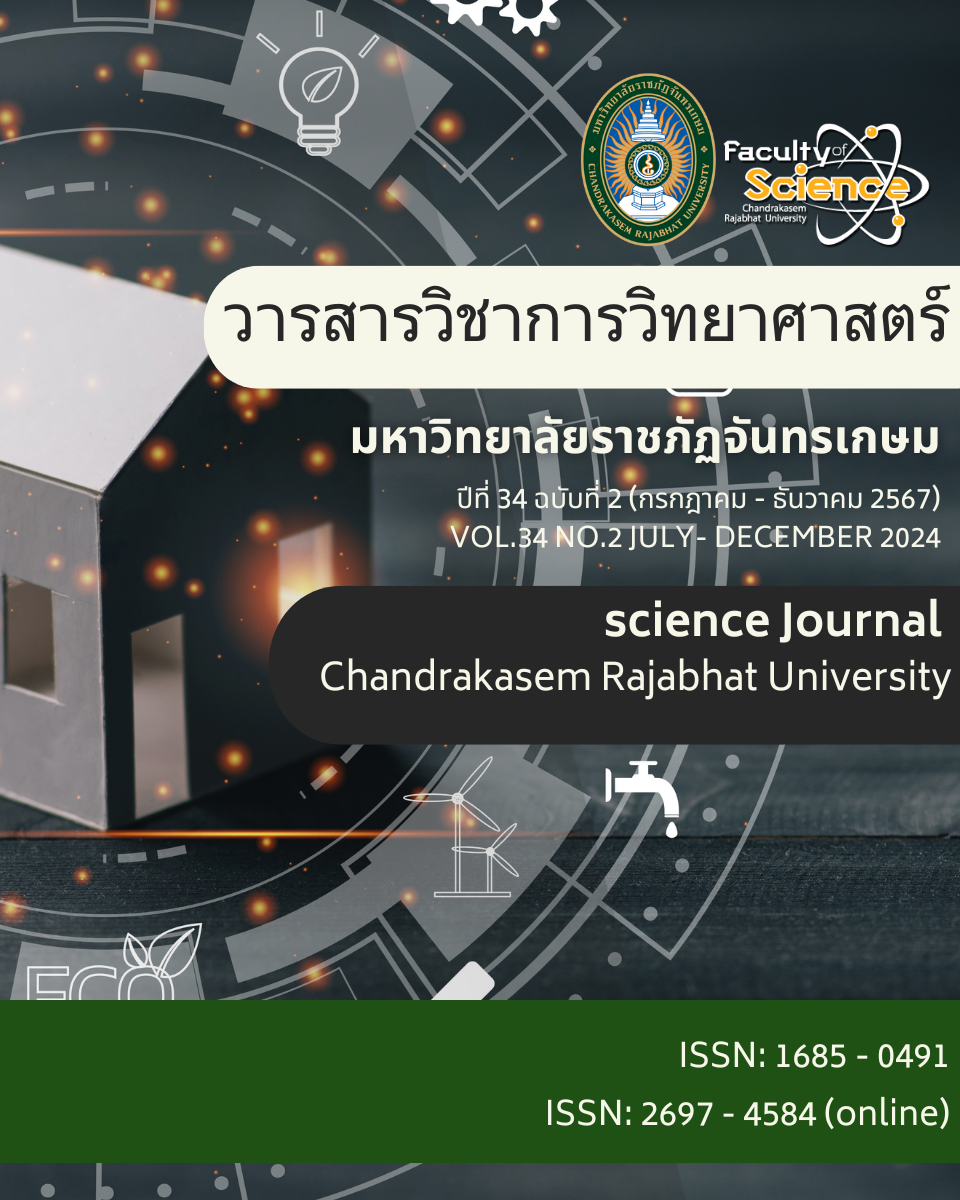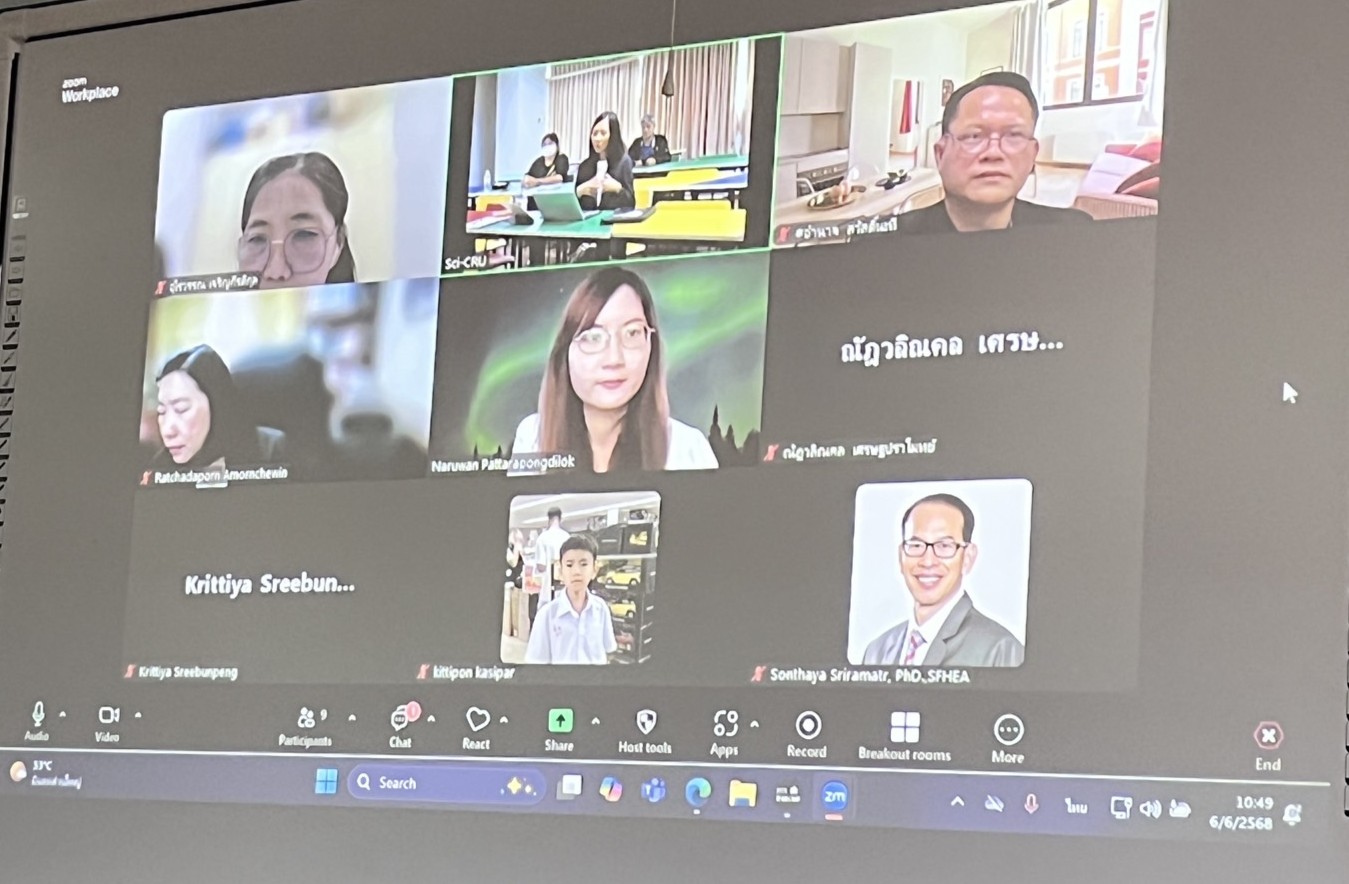Guidelines for Developing Standards for Professional Social Media Influencers
Keywords:
Professional Social Media Influencer StandardsAbstract
This academic article presents a framework for developing standards for social media influencers. The information is derived from a systematic review and analysis of previous research studies, with the aim of establishing comprehensive standards for professional social media influencer development. It introduces best practices, including ethical guidelines, culturally contextual practices for social media influencers, content presentation, engagement between influencers and audiences, professional conduct, adaptability and innovation, and future trends in influencer marketing. These guidelines are intended to enhance credibility and improve the effectiveness of digital marketing strategies. Additionally, the framework supports collaboration between social media influencers and businesses to increase product and service visibility and drive sales growth. The ultimate goal of this article is to create a clear environment for professional social media influencers.
References
Agrawal, A. (2024, June 6). The transformative power of digital marketing in the modern business landscape.
Al-Qatami, M. M. J. (2019). The effects of social media influencer attributes on collaborating brand credibility
and advocacy (Master's thesis). Qatar University, College of Business and Economics. https://qspace.qu.edu.qa/bitstream/handle/10576/11689/Masa%20Al-Qatami_OGS%20Approved% 20Thesis.pdf?sequence=1&isAllowed=y
Balaban, D. C., Mucundorfeanu, M., & Naderer, B. (2022). The role of trustworthiness in social media influencer
advertising: Investigating users’ appreciation of advertising transparency and its effects. Communications. https://doi.org/10.1515/commun-2020-0053
Balaban, D. C., & Szambolics, J. (2022). A proposed model of self-perceived authenticity of social media
influencers. Media and Communication, 10(1), 235-246. https://doi.org/10.17645/mac.v10i1.4765
Barker, S. (2017, November 27). How to create a successful content strategy with influencer marketing (A
complete guide). Search Engine People. https://www.searchenginepeople.com/blog/create-successful-content-strategy-influencer-marketing-complete-guide.html
Crowther, S. (2021, April 15). Ethical considerations in influencer marketing. Campaign Asia.
https://www.campaignasia.com/article/ethical-considerations-in-influencer-marketing/468972
Esguerra, N. (2024, February 26). Maximizing impact: Engaging with influencers and their audience. LinkedIn.
https://www.linkedin.com/pulse/maximizing-impact-engaging-influencers-audience-nicole-esguerra-8zh4c
Eryn. (2023, July 7). 12 best practices for creating culturally relevant content. The Nativa.
https://thenativa.com/blog/12-best-practices-for-creating-culturally-relevant-content/
Fan, F., Chan, K., Wang, Y., Li, Y., & Prieler, M. (2023). How influencers’ social media posts have an influence on
audience engagement among young consumers. Young Consumers. Advance online publication.
https://doi.org/10.1108/YC-08-2022-1588
Goanta, C., & Wildhaber, I. (2020). Controlling influencer content through contracts: A qualitative empirical study
on the Swiss influencer market. In Law 2020 (pp. 210–231). Edward Elgar Publishing. https://doi.org/10.4337/9781788978286.00019
Goel, R. (2023, September 19). Influencer Era: The role of influencer marketing in advertising. Nudge to Budge.
Gu, C., & Duan, Q. (2024). Exploring the dynamics of consumer engagement in social media influencer marketing:
From the self-determination theory perspective. Humanities and Social Sciences Communications, 11(587). https://www.nature.com/articles/s41599-024-03127-w
Harshita. (2024, May 14). Future of influencer marketing-2024. The Media Ant.
https://www.themediaant.com/blog/future-of-influencer-marketing-2024/
Heeley, C., & McNulty, L. (2021, October). Redefining content strategies for influencer marketing. Nielsen.
https://www.nielsen.com/insights/2021/redefining-content-strategy-for-influencer-marketing/
Houghton, D. (2021). Adaptability and resilience: The two most important tools in creative influencer marketing.
Fourth Floor Creative. https://fourthfloorcreative.co/blog/creative-influencer-marketing-agency-tools-adaptability-resilience
Ibáñez-Sánchez, S., Flavián, M., Casaló, L. V., & Belanche, D. (2021). Influencers and brands successful
collaborations: A mutual reinforcement to promote products and services on social media. Journal of Marketing Management, 37(5-6), 469-486. https://doi.org/10.1080/13527266.2021.1929410
Influencity. (2024, May 8). Social media influencers: A complete guide for 2024. Influencity.
https://influencity.com/blog/en/social-media-influencers-everything-you-need-know-about-them
Influencer Marketing Hub. (2024, June 24). The beginner’s guide to influencer marketing on Instagram in 2024.
Influencer Marketing Hub. https://influencermarketinghub.com/influencer-marketing-instagram/
Influencer Marketing Hub. (2024, June 25). What is influencer marketing? – The ultimate guide for 2024.
Influencer Marketing Hub. https://influencermarketinghub.com/influencer-marketing/
IZEA. (2024, April 2). Impact and influence: The effects of influencer culture on society.
https://izea.com/resources/impact-and-influence-of-influencer-culture-on-society/
Ketcham, C. (2019, April 18). How Instagram ruined the great outdoors. The New Republic.
https://newrepublic.com/article/153603/instagram-ruined-great-outdoors
Khanom, M. T. (2023). Using social media marketing in the digital era: A necessity or a choice. International
Journal of Research in Business Studies, 12(3), 88-98. https://doi.org/10.20525/ijrbs.v12i3.2507
Kolo, C., & Haumer, F. (2018). Social media celebrities as influencers in brand communication: An empirical study
on influencer content, its advertising relevance and audience expectations. Journal of Digital & Social Media Marketing, 6(3), 273-282. Henry Stewart Publications. https://www.ingentaconnect.com/content/hsp/jdsmm/2018/00000006/00000003/art00009
Kolo, C., Haumer, F., & Roth, A. (2022). Formal professionalization of early-stage social media “influencers”—
attitudinal drivers and their relation to personality traits. Journal Name, 14(2), 137-163.
https://doi.org/10.1080/14241277.2022.2130324
Kori, A. (2024, June 22). Here's how you can strengthen your Influencer Marketing team to overcome unexpected
challenges. LinkedIn. https://www.linkedin.com/advice/3/heres-how-you-can-strengthen-your-influencer-dllqc
Kosgei, N., Yasser, M., & Hallam, J. (2023). What are effective disclosure practices for social media influencer
marketing? Driven by AI and the LinkedIn community. https://www.linkedin.com/advice/1/what-effective-disclosure-practices-social-media
Kuzminov, M. (2023, January 30). Social responsibility and ethics in influencer marketing. Forbes.
Lee, M. T., & Theokary, C. (2021). The superstar social media influencer: Exploiting linguistic style and emotional
contagion over content? Journal of Business Research, 132, 860-871. https://doi.org/10.1016/j.jbusres.2020.11.014
Miller, J. (2023, November 15). Leveraging local cultural nuances for global business expansion. LinkedIn.
Nanne, A. J., Antheunis, M. L., & van Noort, G. (2021). The role of facial expression and tie strength in sender
presence effects on consumers’ brand responses towards visual brand-related user-generated content. Computers in Human Behavior, 117, 106628. https://doi.org/10.1016/j.chb.2020.106628
Ortová, N., Hejlová, D., & Weiss, D. (2023). Creation of a Code of Ethics for Influencer Marketing: The case of the
Czech Republic. Journal of Marketing Ethics, 65-79. https://doi.org/10.1080/23736992.2023.2193958
Passive Income Gen Z. (2023, June 3). How digital marketing transformed the business landscape. LinkedIn.
https://www.linkedin.com/pulse/how-digital-marketing-transformed-business-landscape
Rand-Hendriksen, M. (2021, September 7). A Code of Ethics for Social Media Influencers. Making sense of AI, tech,
and society. https://www.linkedin.com/pulse/code-ethics-social-media-influencers-morten-rand-hendriksen
Reinikainen, H., Tan, T. M., Luoma-aho, V., & Salo, J. (2021). Making and breaking relationships on social media:
The impacts of brand and influencer betrayals. Technological Forecasting and Social Change, 171, 120990. https://doi.org/10.1016/j.techfore.2021.120990
Rivera, M. (2023, July 28). Content strategy plays a crucial role in influencer marketing. LinkedIn.
https://www.linkedin.com/pulse/content-strategy-plays-crucial-role-influencer-marketing-manny-rivera
Sedda, P., & Husson, O. (2023). Social media influencers: A new hybrid professionalism in the age of platform
capitalism? In Professionalism and Social Change (pp. 281-304).
https://link.springer.com/chapter/10.1007/978-3-031-31278-6_13
Sharma, M. (2021). The persuasive language of online advertisements featuring social media influencers on
Instagram: A multimodal analysis. Indonesian Journal of English Language Teaching, 16(1), 15-36. https://www.researchgate.net/profile/Guy-edmer/publication/351869399_After_class_Students'_ social_use_of_English_as_a_Lingua_Franca_ELF/links/60ae0431299bf13438e8642d/After-class-Students-social-use-of-English-as-a-Lingua-Franca-ELF.pdf#page=18
Smith, A. (2024, June 5). The past, present and future of influencer marketing, according to Taylor Lorenz. Sprout
Social. https://sproutsocial.com/insights/future-influencer-marketing/
Song, A., & Rogers, J. (2023). Lawfluencers: Legal professionalism on TikTok and YouTube. UNSW Law & Justice
Research Series, UNSWLRS 7. Forthcoming in Georgetown Journal of Legal Ethics, 37, 2024. UNSW Law & Justice.
Santora, J. (2024, May 23). 16 influencer marketing trends that will shape 2024. Influencer Marketing Hub.
https://influencermarketinghub.com/influencer-marketing-trends/
Tang, M. J., & Chan, E. T. (2020). Social media: Influences and impacts on culture. In Intelligent Computing (SAI
(pp. 491–501). Springer. https://doi.org/10.1007/978-3-030-52249-0_33
Temertzoglou, V. (2024, May 14). The future of influencer marketing: A 2024 outlook. Embold.
https://www.embold.co/blog/the-future-of-influencer-marketing
Thomas, V. L., Fowler, K., & Taheran, F. (2023). How social media influencer collaborations are perceived by
consumers. Journal of Consumer Marketing. https://doi.org/10.1002/mar.21918
User463. (2024, March 17). The rise of influencer culture: How social media is shaping trends and behaviors.
Wibowo, G. A., Hanna, F., Ruhana, F., & Usmaedi. (2023). The influence of social media on cultural integration: A
perspective on digital sociology. International Journal of Sociology, 5(4), 363-375. https://doi.org/10.54783/ijsoc.v5i4.792
Downloads
Published
How to Cite
Issue
Section
License
Copyright (c) 2024 Chandrakasem Rajabhat University

This work is licensed under a Creative Commons Attribution-NonCommercial-NoDerivatives 4.0 International License.
บทความที่ได้รับการตีพิมพ์เป็นลิขสิทธิ์ของมหาวิทยาลัยราชภัฏจันทรเกษม
ข้อความที่ปรากฎในบทความแต่ละเรื่องในวารสารวิชาการเล่มนี้เป็นความคิดเห็นส่วนตัวของผู้เขียนแต่ละท่าน ไม่เกี่ยวข้องกับมหาวิทยาลัยราชภัฏจันทรเกษม และคณาจารย์ท่านอื่นในมหาวิทยาลัยแต่อย่างใด ความรับผิดชอบองค์ประกอบทั้งหมดของบทความแต่ละเรื่องเป็นของผู้เขียนแต่ละท่าน หากมีความผิดพลาดใดๆ ผู้เขียนแต่ละท่านจะรับผิดชอบบทความของตัวเองแต่เพียงผู้เดียว


 For Author
For Author






